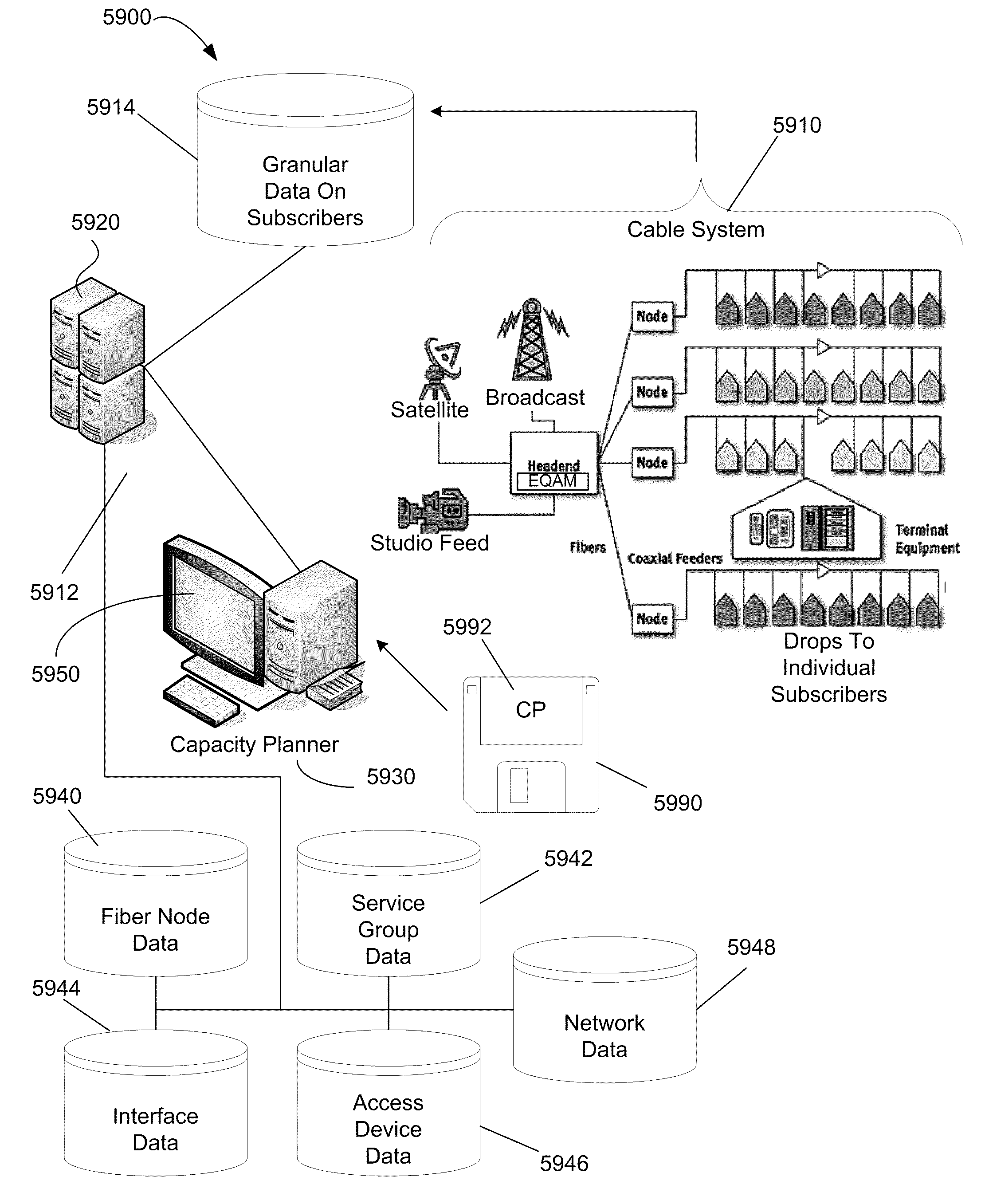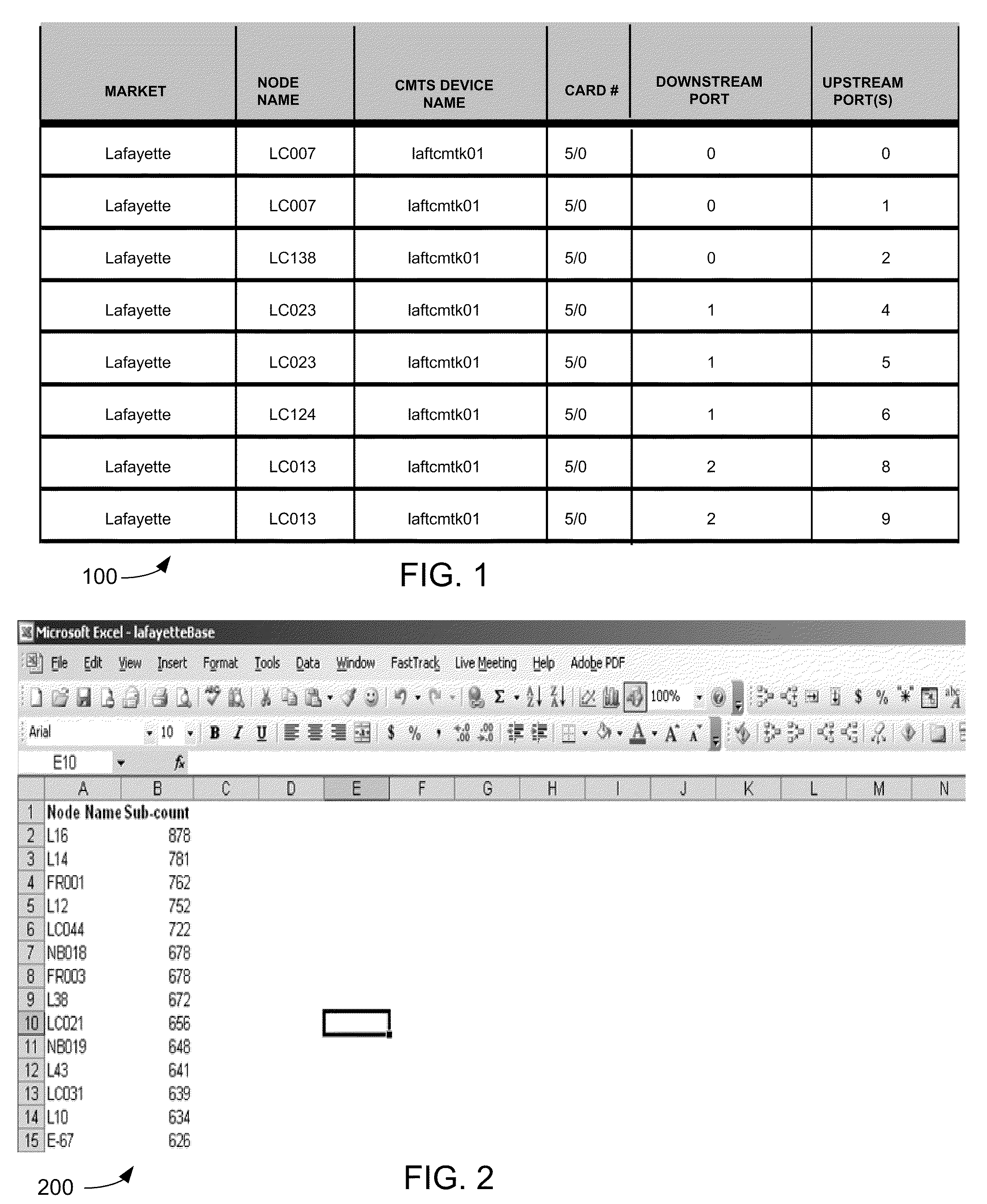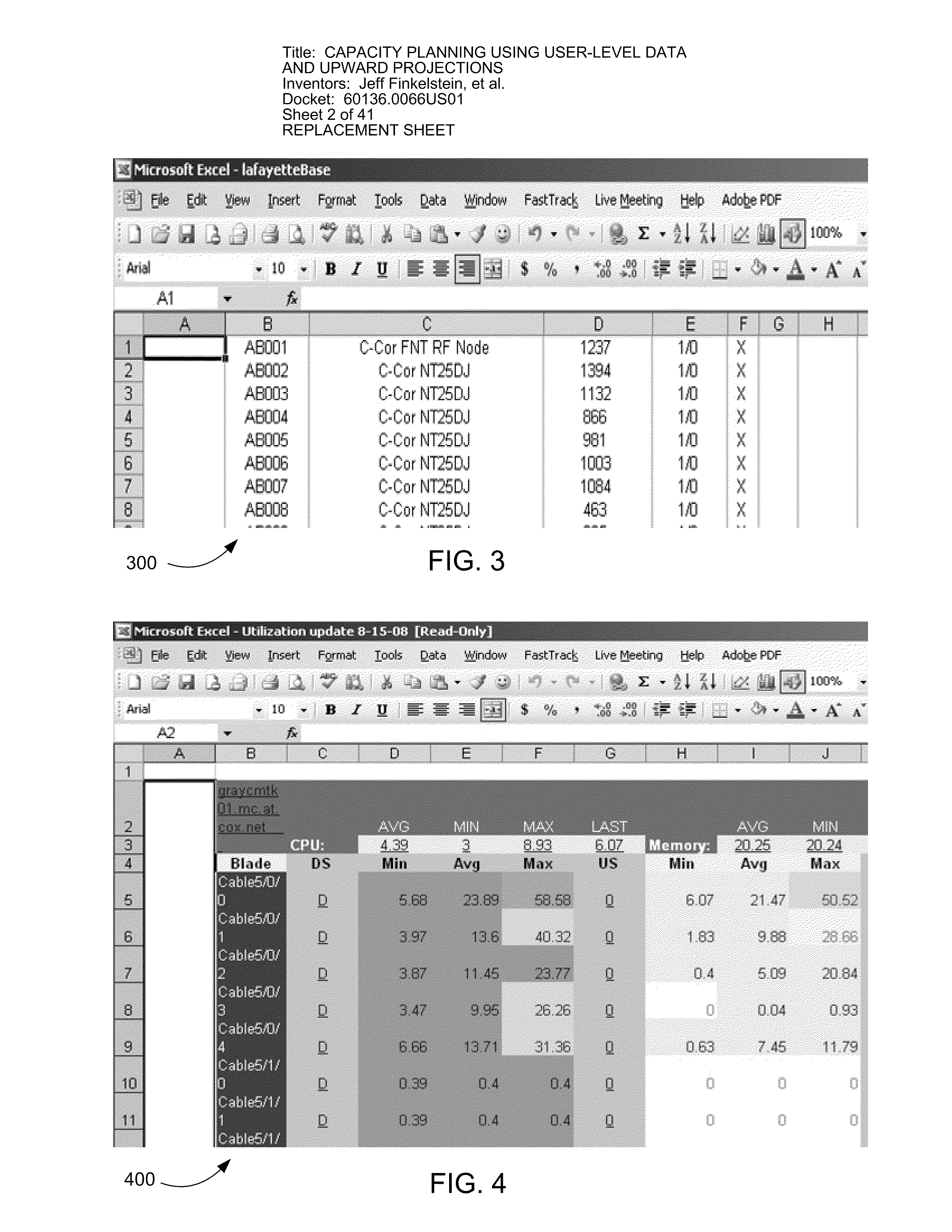Capacity Planning Using User-Level Data and Upward Projections
a technology of user-level data and capacity planning, applied in the field of model telecommunications networks, can solve problems such as leaving customers feeling less satisfied about the experien
- Summary
- Abstract
- Description
- Claims
- Application Information
AI Technical Summary
Problems solved by technology
Method used
Image
Examples
Embodiment Construction
[0074]Embodiments of the present invention are directed to using data collected from the user level to project upwards to model a telecommunications network.
[0075]Rather than take such a top down view of the network capacity world, embodiments described herein reconstruct a bottom up view. Data is collected at the user-level. The user-level data may include subscriber data, demographic parameters, speed tiers, and application mixes, etc. This data then may be used to reconstruct the consumption down at the user level. From this, bandwidth capacity planning is projected upwards. For example, how much bandwidth each individual user would consume is gathered and then a model is built to move upwards and determine how much capacity is needed for a particular fiber node. Capacity for a group of fiber nodes, e.g., a service group, is determined using the data associated with particular fiber nodes. This process then continues up to an interface on an access device, a particular access dev...
PUM
 Login to View More
Login to View More Abstract
Description
Claims
Application Information
 Login to View More
Login to View More - R&D
- Intellectual Property
- Life Sciences
- Materials
- Tech Scout
- Unparalleled Data Quality
- Higher Quality Content
- 60% Fewer Hallucinations
Browse by: Latest US Patents, China's latest patents, Technical Efficacy Thesaurus, Application Domain, Technology Topic, Popular Technical Reports.
© 2025 PatSnap. All rights reserved.Legal|Privacy policy|Modern Slavery Act Transparency Statement|Sitemap|About US| Contact US: help@patsnap.com



